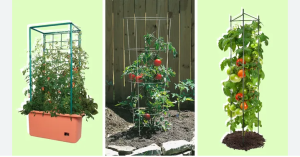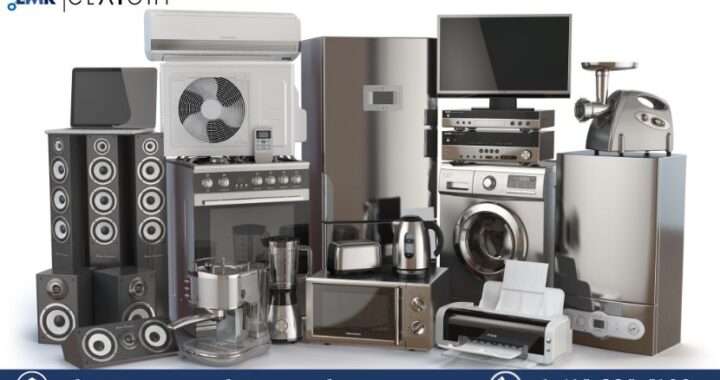Why Tomato Cages Are Essential for Healthy Plants

Tomato cages may seem like a simple gardening accessory, but they play a crucial role in ensuring the health and productivity of tomato plants. In this article, we’ll explore why tomato cages are essential for supporting healthy plants and maximizing your garden’s yield.
What Are Tomato Cages?
Understanding Tomato Cages
Tomato cages are cylindrical structures typically made of metal or sturdy plastic. They are designed to provide support to tomato plants as they grow, helping them remain upright and preventing sprawling.
Benefits of Using Tomato Cages
Benefits of Tomato Cages
Using tomato cages offers several advantages for gardeners:
1. Structural Support
Tomato plants, especially once they start fruiting, can become heavy and top-heavy. They might break or bow under the weight of themselves if they are not supported. Tomato cages provide a sturdy framework that keeps plants upright, reducing the risk of damage.
2. Air Circulation
Proper air circulation is vital for preventing diseases such as fungal infections in tomato plants. Cages keep the plants off the ground, allowing air to circulate freely around the foliage and fruit, which helps in maintaining plant health.
3. Easy Harvesting
When tomato plants are supported by cages, the fruit is more accessible and easier to harvest. You can easily reach between the foliage to pick ripe tomatoes without damaging the plant or disturbing other fruits.
4. Space Efficiency
Caged tomato plants take up less space compared to sprawling plants. This is particularly beneficial in smaller gardens or containers where maximizing space is crucial. Cages allow you to grow more plants in a limited area without sacrificing productivity.
Types of Tomato Cages
Different Types of Tomato Cages
There are various types of tomato cages available:
1. Metal Tomato Cages
Metal cages are durable and provide excellent support for larger tomato varieties. They can withstand the weight of mature plants and are reusable season after season.
2. Plastic Tomato Cages
Plastic cages are lightweight and often more affordable than metal ones. They are suitable for smaller tomato varieties and are easy to move around as needed.
3. DIY Tomato Cages
Some gardeners prefer to make their tomato cages using materials like wooden stakes and chicken wire. DIY cages can be customized to fit specific plant needs and garden aesthetics.
How to Use Tomato Cages Effectively
Tips for Using Tomato Cages
To maximize the usefulness of your tomato cages:
1. Install Early
Set up tomato cages shortly after transplanting seedlings into the garden. This allows the plants to grow into the cages as they develop.
2. Prune Regularly
Regular pruning encourages healthy growth and prevents overcrowding within the cage. Remove suckers and unnecessary foliage to improve air circulation and focus plant energy on fruit production.
3. Secure Properly
Ensure that tomato cages are firmly anchored in the soil to withstand wind and the weight of mature plants. Stabilize them by driving stakes into the ground or using heavy-duty clips.
Conclusion
Tomato cages are indispensable tools for any tomato gardener looking to achieve healthy, productive plants. Secret tips providing essential support to enhancing air circulation and facilitating easier harvesting, the benefits of using tomato cages are numerous. Whether you opt for metal, plastic, or DIY versions, investing in quality tomato cages will contribute significantly to the success of your tomato garden.
By incorporating tomato cages into your gardening routine, you not only ensure healthier plants but also improve the overall efficiency and enjoyment of growing tomatoes. Embrace the simplicity and effectiveness of tomato cages, and watch your tomato plants thrive season after season.

 Enhance Your Shop Appeal with Sydney’s Best Carpentry Services
Enhance Your Shop Appeal with Sydney’s Best Carpentry Services  What Are the Top Safety Features of Automatic Close Doors?
What Are the Top Safety Features of Automatic Close Doors?  What are The Legalities of Starting a Metal Panels Business in the UAE
What are The Legalities of Starting a Metal Panels Business in the UAE  India Home Appliances Market Share, Size, Trends and Industry Report 2024-2032
India Home Appliances Market Share, Size, Trends and Industry Report 2024-2032  What Are the Best Kitchen Mats for Cold Floors?
What Are the Best Kitchen Mats for Cold Floors?  What are the Best Types of Hand Tufted Carpets?
What are the Best Types of Hand Tufted Carpets?  Exploring London’s Best Butcher Shops
Exploring London’s Best Butcher Shops  A Detailed Look at the Features of the LEGO Technic Mars Crew Exploration Rover
A Detailed Look at the Features of the LEGO Technic Mars Crew Exploration Rover